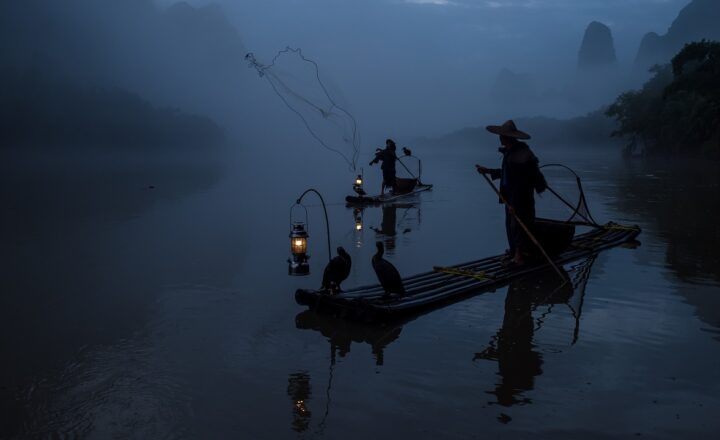A Look Inside Japan’s Fascinating World of Commercial Fishing
November 11, 2024

Japan is an island nation renowned for its rich cultural heritage, vibrant lifestyle, and deep connection to the sea. With over 18,000 miles of coastline and a diverse marine ecosystem, it’s no surprise that commercial fishing has played a pivotal role in Japanese society for centuries. In this article, we will delve into the fascinating world of commercial fishing in Japan, exploring methods, traditions, challenges, and sustainability efforts.
1. The Significance of Commercial Fishing in Japan
Commercial fishing is more than just an industry in Japan; it is a vital component of the nation’s identity. Fishing provides a significant source of food for the population, sustaining millions of livelihoods both directly and indirectly. With seafood being a cornerstone of Japanese cuisine, the demand for fresh fish continues to thrive. In fact, Japan is one of the largest consumers of seafood per capita in the world.
Historically, fishing in Japan has been intertwined with cultural practices and traditions. From the ancient practice of communal fishing (known as ‘suzuki’) to modern fishing towns that celebrate their maritime heritage with festivals and rituals, the relationship between the Japanese people and the sea is profound.
2. Traditional Fishing Methods: A Glimpse of the Past
Japan’s fishing heritage is rich with traditions that date back generations. Some of the most notable traditional fishing methods include:
- Ikijimi: This humane fish-catching technique involves stunning fish with a quick blow before bleeding them out. It is believed that this method improves the fish’s quality and taste.
- Tako Tsuri: A traditional form of octopus fishing where fishermen use traps to catch octopi. This method has been passed down through generations and is still popular today.
- Umino Tori: This ancient method uses trained cormorants to catch fish, resulting in a unique culinary dish that combines fishing with live bird performance.
Many of these practices have been adapted over time but remain integral to Japan’s fishing culture. Traditional fishing is not only about catching fish; it also reflects respect for marine life and the environment.
3. Modern Commercial Fishing Techniques
In recent years, Japan’s commercial fishing industry has embraced advanced technology and sustainable practices to meet the growing demand for seafood while minimizing environmental impact. Some of the key modern techniques include:
- Purse Seining: A common method that involves surrounding a school of fish with a large net, pulling it closed at the bottom to catch the fish. This technique is primarily used for tuna and sardines.
- Longline Fishing: This method uses a long line with baited hooks attached at intervals. It targets various species, including tuna and swordfish, and is considered more selective, reducing bycatch.
- Aquaculture: As the demand for seafood increases, aquaculture has become an essential supplement to wild fishing. Japan has invested heavily in developing sustainable fish farming practices, such as raising high-quality Japanese sea bream and yellowtail in controlled environments.
These modern techniques allow for greater efficiency and yield while promoting sustainable fishing practices, helping to ensure the long-term viability of Japan’s marine resources.
4. Challenges Facing Japan’s Fishing Industry
Despite the rich history and significance of commercial fishing in Japan, the industry faces numerous challenges that threaten its future:
- Overfishing: The demand for seafood has led to overharvesting in some areas, resulting in dwindling fish populations and ecological imbalance.
- Environmental Issues: Pollution and climate change significantly impact marine ecosystems, affecting fish stocks and breeding grounds. Rising ocean temperatures and acidification pose serious risks to many species vital to Japan’s fishing economy.
- Aging Workforce: The fishing industry in Japan has an aging workforce, with fewer young individuals entering the field, leading to labor shortages and a decline in fishing knowledge and skills.
Addressing these challenges requires a collaborative effort from the government, industry stakeholders, and local communities to promote sustainable practices and protect marine biodiversity.
5. Sustainable Fishing Practices and Innovations
In recognition of the challenges facing its fishing industry, Japan has taken meaningful steps towards sustainable fishing practices. Initiatives encompass:
- Marine Protected Areas (MPAs): Designating sections of the ocean as MPAs helps safeguard important habitats and spawning grounds, allowing fish populations to recover and thrive.
- Sustainable Certifying Programs: The Marine Stewardship Council (MSC) and other organizations offer certification for fisheries that follow sustainable practices, helping consumers make informed choices.
- Research and Technology: Investments in research and technology enhance the ability to assess fish stocks accurately and develop sustainable harvesting methods, such as selective fishing gear to minimize bycatch.
These sustainability initiatives are key to preserving Japan’s marine resources for future generations while ensuring the fishing industry remains vibrant.
6. The Future of Japan’s Commercial Fishing Industry
Looking ahead, the future of Japan’s commercial fishing industry will depend heavily on balancing tradition with innovation. Embracing technology, education, and sustainability will be crucial to meeting the diverse needs of society while protecting ocean ecosystems.
As younger generations seek careers in fishing, educational initiatives emphasizing the importance of marine conservation and traditional fishing practices are essential. Fostering a culture of respect for the sea and promoting careers in fishing can inspire a new generation to lead the industry forward.
Conclusion
Japan’s commercial fishing industry is a vibrant tapestry that weaves together tradition, culture, and innovation. Despite facing numerous challenges, the future of this vital sector relies on sustainable practices and educating future fishermen about the importance of preserving the marine environment. By understanding and embracing both the historical and modern aspects of fishing, Japan can continue to enjoy a flourishing relationship with the sea for generations to come.
In summary, Japan’s fascinating world of commercial fishing exemplifies how ancient customs can evolve through modern techniques while fostering sustainability. As this industry navigates its way forward, it must remain mindful of its deep-rooted heritage and the delicate balance of the marine ecosystem.








